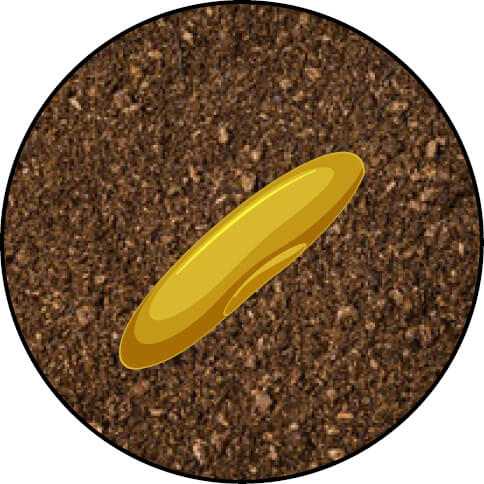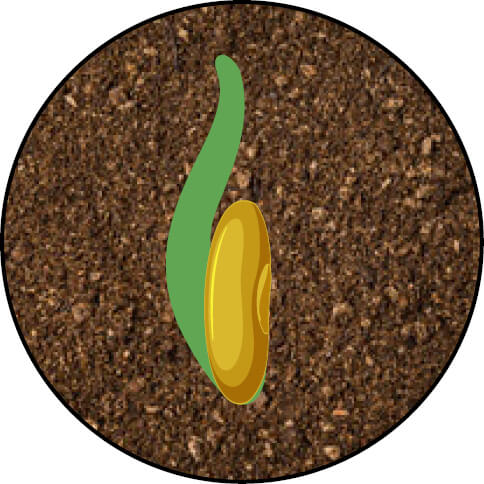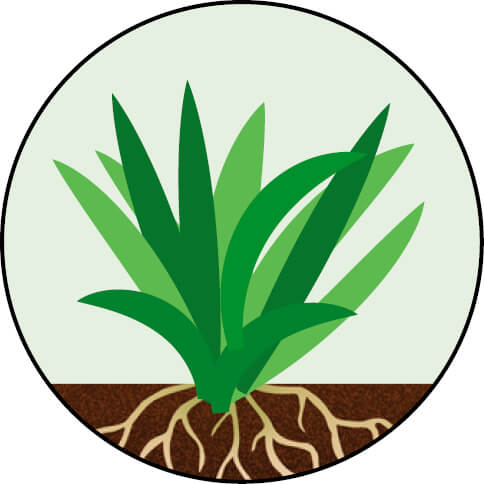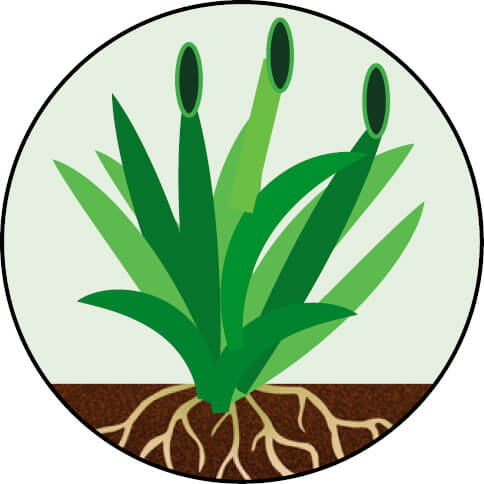Understanding endophytes
Endophytes exist in a symbiotic relationship where by they are provided the nutrients needed to exist from the plant and in return provide benefits to the host plant such as protection from insect attack.
Endophytes take at least 6-8 weeks to fully establish in newly sown seedlings, so it is important to use other control options to prevent damage to grasses during early establishment. Once grasses are well established with multiple tillers, then you can rely on protection from the endophyte.
Different strains of endophyte are available in many of the grass cultivars.
Endophyte Types
Standard Endophyte
The Standard strain (SE) implies that the cultivar contains a wild type endophyte which will help resist insect attack (e.g. Argentine stem weevil, Black Beetle), and help to prevent over-grazing but may, particularly in dry summer conditions. May cause ryegrass staggers and reduce animal growth rates. Generally good value for money.
Nil Endophyte
In some areas, ryegrasses without endophyte can be used. Such pastures are animal safe and deliver excellent animal performance. However, you can expect less persistence in areas where pasture pests are present. Low endophyte (LE) implies low or nil endophyte infection levels in the seed and its use is best suited to areas of low insect predation generally associated with high summer moisture.
AR37 Endophyte
AR37 endophyte provide improved ryegrass persistence and an overall increase in ryegrass production. AR37 does not contain the alkaloid compounds of lolitrem B, peramine, or ergovaline, but does have a unique set of compounds called epoxy-janthitrems.
AR1 Endophyte
High animal performance novel endophyte option. Delivers excellent animal performance & provides a moderate range of insect protection. Has demonstrated poor persistence in areas with major insect pest pressure from Black Beetle and Root Aphid.
GrubOUT U2 Endophyte
The GrubOUT® U2 endophyte contains a unique set of alkaloids called lolines, which insects don’t like. Use GrubOUT® U2 and enjoy the benefits of better pasture protection against insect pests, improved pasture persistence and superior livestock performance potential.
Endo5
Contains no Lolitrem B, the main cause of ryegrass staggers. Provides good control of Black Beetle, Argentine Stem Weevil, Root Aphid and Pasture Mealy Bug. Produces less ergovaline than many ryegrass cultivars containing standard endophyte. This said, it may produce lower animal performance levels over summer/autumn compared with AR1 and nil endophyte options.
MaxP®
Ideal for grazing stock and excellent protection against Black Beetle. Aids persistence of tall fescue. MaxP® endophyte in continental tall fescues has been used and trialed against a number of animal species with no known adverse animal health effects.
- Standard Endophyte: Matrix, Somerset
- Nil Endophyte: Surge, Sonik, Winter Star II, Bullet, Dash
- AR37: Base, Excess, Expo, Lush
- GrubOut U2: Barrier
- Endo5: Reward
- MaxP®: Quantum II
Endophyte Life Cycle

#1
Endophyte is found in embryo of infected seed

#2
The Endophyte grows into the emerging leaf as the seed germinates

#3
The Endophyte is concentrated in the base of the plant, not the roots

#4
The Endophyte grows up the stem and into the seed head of the reproductive plant
Endophytes in further detail
Endophytes are fungi that exist inside ryegrass plants as well as in some other closely related species.
Endophyte infection results in the production of many alkaloids of which those thought to be of most significance currently are:
- Peramine, which provides the plant protection from Argentine Stem Weevil attack primarily and some resistance to Black Beetle.
- Lolitrem B, which provides some protection against some insect pests but is a neurotoxin that causes ryegrass staggers in stock
- Ergovaline, which provides some protection against black beetle attack, but causes heat stress in stock.
There is thought to be an interaction between the effects of ergovaline and lolitrem B worsening the impacts on stock. The most common effect of these compounds is to reduce animal performance, although in extreme cases, death through misadventure can result.
Most grazing animals will preferentially graze endophyte free pasture over comparable endophyte infected pasture. However there are now endophyte strains available commercially that provide some of the same insect attack protection without all the negative side effects.







